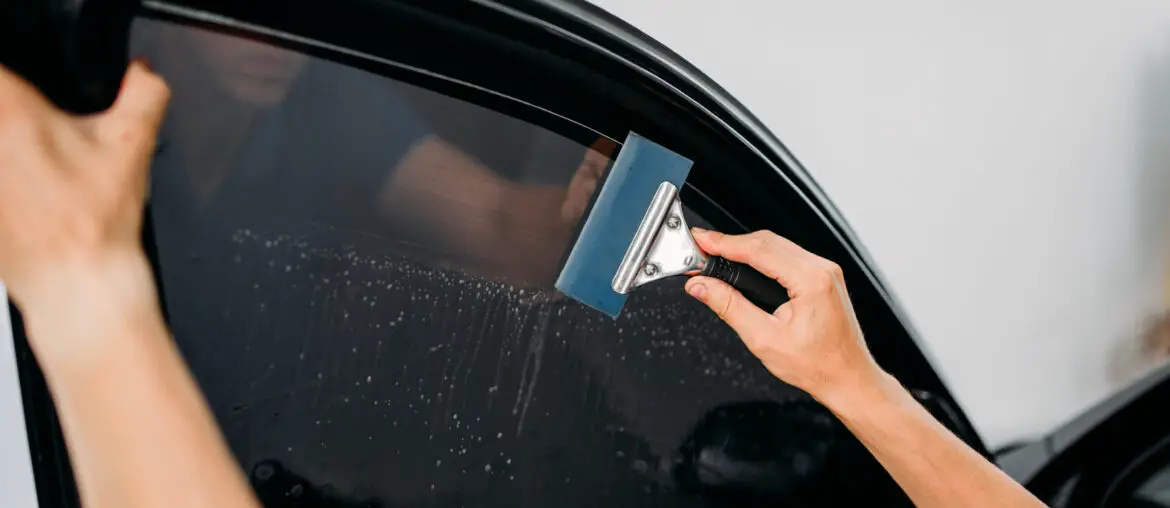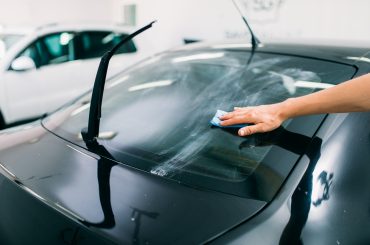The window tint laws by state differ across the country. So, before you make the decision to get your car windows tinted, you would need to check the car window tinting laws applicable to your state. This might be hard to identify which law is applicable to which state and would often be misled. It would also be challenging for people who travel across the states, from one to another, and also for people who buy out-of-state vehicles. If you are planning to move into another state, this would also be a major concern.
Allowed legal window tint levels would differ from one state to another. There would even be misconceptions and misunderstandings that would guide you to wrong conclusions. Therefore, it is always good to know the truth and avoid getting into trouble. Having the proper window tint levels in your state would also help you to get protection from the harsh sun and safeguard your vehicle from intruders.
Not knowing the window tinting laws of your state would not be an excuse if you do get pulled over. As you know, prevention is always better than cure. So, we would help you to understand all the laws related to window tinting, with respect to the states. This would guide you to stay within legal limits and avoid getting pulled over or fined.
Window Tint Laws By State

Window-Tint-Laws-By-State
Why Is Window Tint Illegal In Some States?
In general, all states allow car windows to be tinted, but there are limitations for every state. However, window tint is not completely banned from any state. The legal authorities of the states allow the vehicle owners to use window tint, while controlling the visibility levels, depending on the security levels of the state. One reason for this is that limited visibility due to dark-colored window tints would lead to accidents. Extreme dark tints would also lead to obstruction in investigations of illegal activities.
What are the Differences in VLT Percentages?
The amount of visible light allowed to transmit through the windows is dependent on a factor named Visual Light Transmission. The higher the percentage, the lighter the shade of the tint would be. This is a measurement of how much tint is legal. For more information on this factor and the calculations of VLT, refer to the tint percentage.
How Much Tint Is Legal?
This varies, depending on the state. Most of the states do not allow window tint on the windshield below the first 5 or 6 inches. This is done as a safety precaution. However, states like Ohio and North Dakota allow even the windshield to be tinted, but it needs to be of 70% or more VLT. Therefore, it is evident that the restrictions depend on the respective state. Let’s identify the allowed VLT percentages of each state.
All Window Tinting Laws by State
Table 1 below shows the different states and the limits of VLT percentages they allow within their respective legal limitations. Check out the allowed legal limits of your state.
| State | Front Sides | Rear Sides | Rear Window | Windshield | Reflectivity |
| Alabama | 32% | 32% | 32% | 6” | no more than 20% reflective |
| Alaska | 70% | 40% | 30% | 5” | no metallic or mirrored tinting |
| Arizona | 33% | ANY | ANY | AS1 | no more than 35% reflective |
| Arkansas | 25% | 25% | 10% | 5” | no metallic or mirrored tinting |
| California | 70% | ANY | ANY | 4” | no more reflective than a standard window |
| Colorado | 27% | 27% | 27% | 4” | no metallic or mirrored tinting |
| Connecticut | 35% | 35% | ANY | AS1 | no more than 21% reflective |
| Delaware | 70% | ANY | ANY | AS1 | no metallic or mirrored tinting |
| District of Columbia | 70% | 50% | 50% | 5”/ AS1 | no metallic or mirrored tinting |
| Florida | 28% | 15% | 15% | AS1 | no more than 25% reflective |
| Georgia | 32% | 32% | 32% | 6” | no more than 20% reflective |
| Hawaii | 32% | 35% | 35% | 70% light | no metallic or mirrored tinting |
| Idaho | 35% | 20% | 35% | AS1 | no more than 35% reflective |
| Illinois | 35% | 35% | 35% | 6” | must be non-reflective |
| Indiana | 30% | 30% | 30% | 6” | no more than 25% reflective |
| Iowa | 70% | ANY | ANY | AS1 | no excessive reflections allowed, but not specified |
| Kansas | 35% | 35% | 35% | AS1 | no metallic or mirrored tinting |
| Kentucky | 35% | 18% | 18% | AS1 | no more than 25% reflective |
| Louisiana | 40% | 25% | 12% | AS1 | no more than 20% reflective |
| Maine | 35% | ANY | ANY | 4” | must be non-reflective |
| Maryland | 35% | 35% | 35% | 5” | no law |
| Massachusetts | 35% | 35% | 35% | 6” | no more than 35% reflective |
| Michigan | 4” | ANY | ANY | 4” | no more than 35% reflective |
| Minnesota | 50% | 50% | 50% | NONE | no more than 20% reflective |
| Mississippi | 28% | 28% | 28% | AS1 | no more than 20% reflective |
| Missouri | 35% | ANY | ANY | AS1 | no more than 35% reflective |
| Montana | 24% | 14% | 14% | AS1 | no more than 35% reflective |
| Nebraska | 35% | 20% | 20% | 5”/ AS1 | no more than 35% reflective |
| Nevada | 35% | ANY | ANY | AS1 | no law |
| New Hampshire | NONE | 35% | 35% | 6” | no metallic or mirrored tinting |
| New Jersey | NONE | ANY | ANY | NONE | no metallic or mirrored tinting |
| New Mexico | 20% | 20% | 20% | 5”/ AS1 | no law |
| New York | 70% | 70% | ANY | 6” | no metallic or mirrored tinting |
| North Carolina | 35% | 35% | 35% | AS1 | no more than 20% reflective |
| North Dakota | 50% | ANY | ANY | <70% | no metallic or mirrored tinting |
| Ohio | 50% | ANY | ANY | <70% | no more reflective than a standard window |
| Oklahoma | 25% | 25% | 25% | 5”/ AS1 | no more than 20% reflective |
| Oregon | 35% | 35% | 35% | 6” | no more than 13% reflective |
| Pennsylvania | 70% | 70% | 70% | NONE | no metallic or mirrored tinting |
| Rhode Island | 70% | 70% | 70% | AS1 | no law |
| South Carolina | 27% | 27% | 27% | AS1 | must be non-reflective |
| South Dakota | 35% | 20% | 20% | AS1 | no metallic or mirrored tinting |
| Tennessee | 35% | 35% | 35% | AS1 | no metallic or mirrored tinting |
| Texas | 25% | 25% | ANY | 5”/ AS1 | no more than 25% reflective |
| Utah | 43% | ANY | ANY | AS1 | no metallic or mirrored tinting |
| Vermont | NONE | ANY | 32% | 32% | no metallic or mirrored tinting |
| Virginia | 50% | 35% | 35% | AS1 | no more than 20% reflective |
| Washington | 24% | 24% | 24% | 6” | no more than 35% reflective |
| Washington D.C. | 70% | Cars 50%Multi-purpose vehicles 35% | Cars 50%Multi-purpose vehicles 35% | 5” | no law |
| West Virginia | 35% | 35% | 35% | 5” | 20% reflective |
| Wisconsin | 50% | 35% | 35% | AS1 | no law |
| Wyoming | 28% | 28% | 28% | 5”/ AS1 | no more than 20% reflective dual side mirrors |
State Break Down
As you can see in the table above, there are states that have less strict rules and others that have very strict laws. The car tint laws of the easy-going states are less intense and they allow low VLT percentages, around 30% and they would not mind you having quite dark shades of tint. Most of the states allow percentages around this value. The states which are at a middle level tend to have allowed around 30% to 70%. The most strict car tint laws require proper maintenance of a 70% VLT.
Even if you have not installed a window tint, there would be some vehicles that have privacy glass which might be darker than the legal allowances. For more details on these, refer to the article on Privacy Glass.
Medical Exemptions
People who drive with special medical situations such as albinism are more sensitive to sunlight than ordinary people and would need to be protected from the direct sun. Therefore, such people would need to be given medical exemptions. These procedures are allowed in all states with proper recommendations and prescriptions from a physician. There would be other conditions where people need to be protected from UV and IR radiation. For more details, refer to Can Car Window Tinting can Reduce UV Radiation and also the article on How Does Window Tint Reduce Heat.
Are Limo Tints Prohibited?
Limo tints are the full blackened type of tints and are allowed in some states. However, this depends on the state laws. This would also depend on the type of vehicle. Therefore, it is advised to check the state laws in detail before you start. Refer to the following on Texas Window Tint Law for an example of a detailed description.
Texas Window Tint Law
Texas is a state that receives abundant sunlight throughout the year. Therefore, having a window tint is essential for health and safety purposes. For a complete compilation of the vehicle window tint laws of the state of Texas, refer to Texas Window Tint Laws.
Tint Law Interpretation
As you have learned in the context above, most of the states have definite VLT percentages and are straightforward about their laws. Sometimes, there are slightly ambiguous laws that leave a little space for law enforcement and other licensing agencies to interpret. As an example, the terms used in the laws such as “non-reflective” and “non-excessive” cannot be measured. They would not always interpret the same meaning for every person as well. However, it is always recommended to abide by the rules state laws.
Therefore, before you get started with this approach to tinting your windows, refer to our article on How to Tint Car Windows.
If you are interested in the cost of new window tint installation, find more details at How Much to Tint Windows.








